Abstract
Human flexor pollicis longus tendons obtained at autopsy were subjected to repeated sinusoidal stretching movements. The associated force changes were almost in phase with the movement (force led position by less than 4 degrees), and alterations in the frequency of movement between 2 and 16 Hz had little effect on them. Examination of the thumbs of formalin-fixed cadavers demonstrated that the tendon exerts its force 7.4-8.0 mm in front of the axis of movement of the interphalangeal joint. From a knowledge of the tendon properties and the joint anatomy, one can calculate the changes in tendon length that would accompany any force change at the joint. Equipped with this information one can re-examine the responses to sinusoidal movements of the thumb interphalangeal joints of normal subjects. When the subject exerts a steady flexing force in which stretch reflexes play no important part, measurements of joint stiffness indicate that only a portion of the imposed movement reaches the muscle fibres. The extension of those (visco-elastic) muscle fibres lags behind the extension of the (elastic) tendon. Stretch reflexes contribute to the mechanical resistance of muscle fibres to low frequency (3-5 Hz) displacements, but in the presence of a compliant tendon the length of the muscle fibres does not determine the angle of the joint in any positive way. It is suggested that the compliant tendons of many thumb and finger muscles simplify the neuromuscular control of forces during gripping and handling movements.
Full text
PDF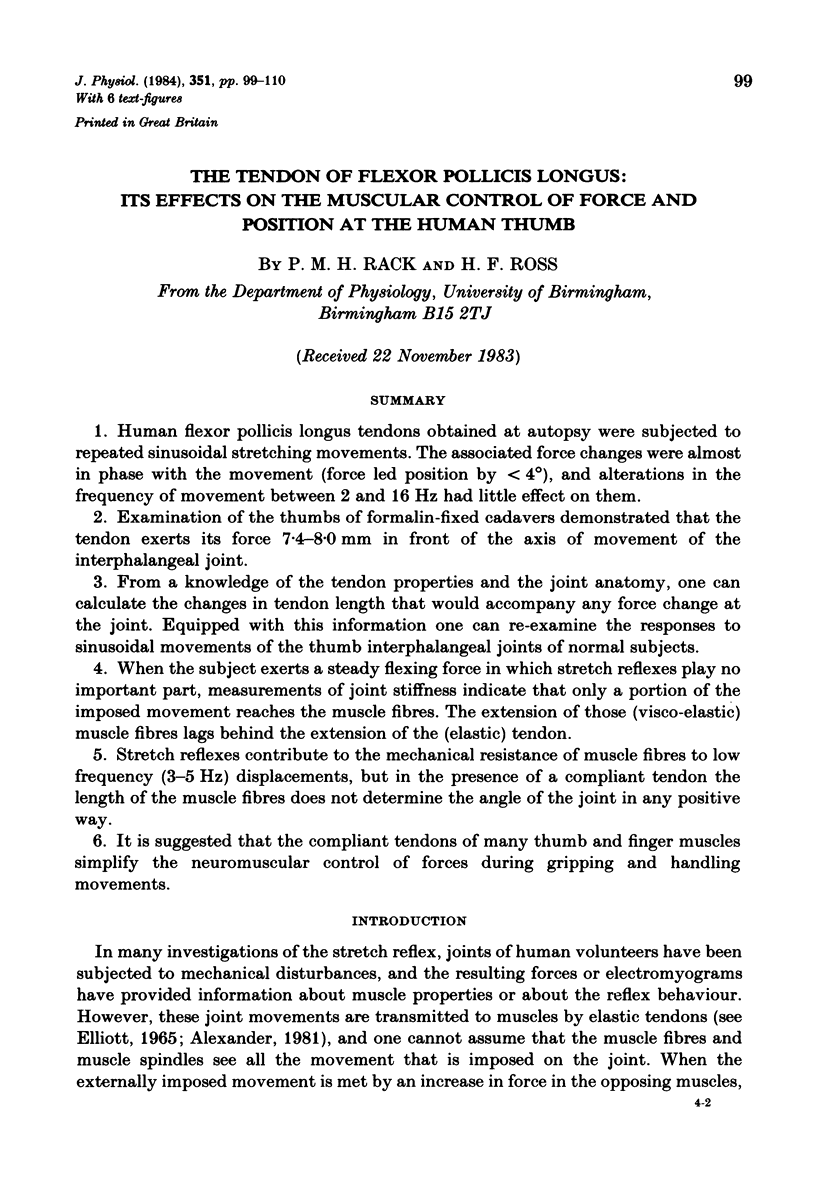

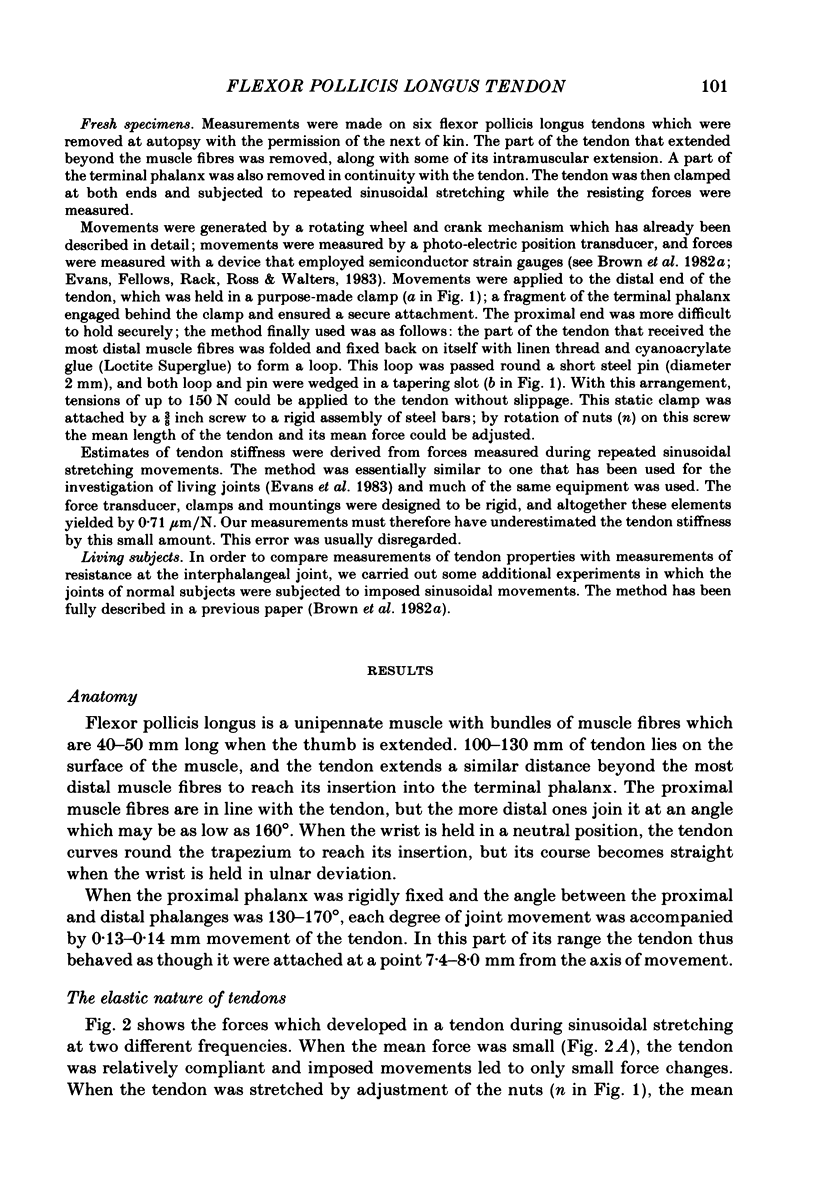
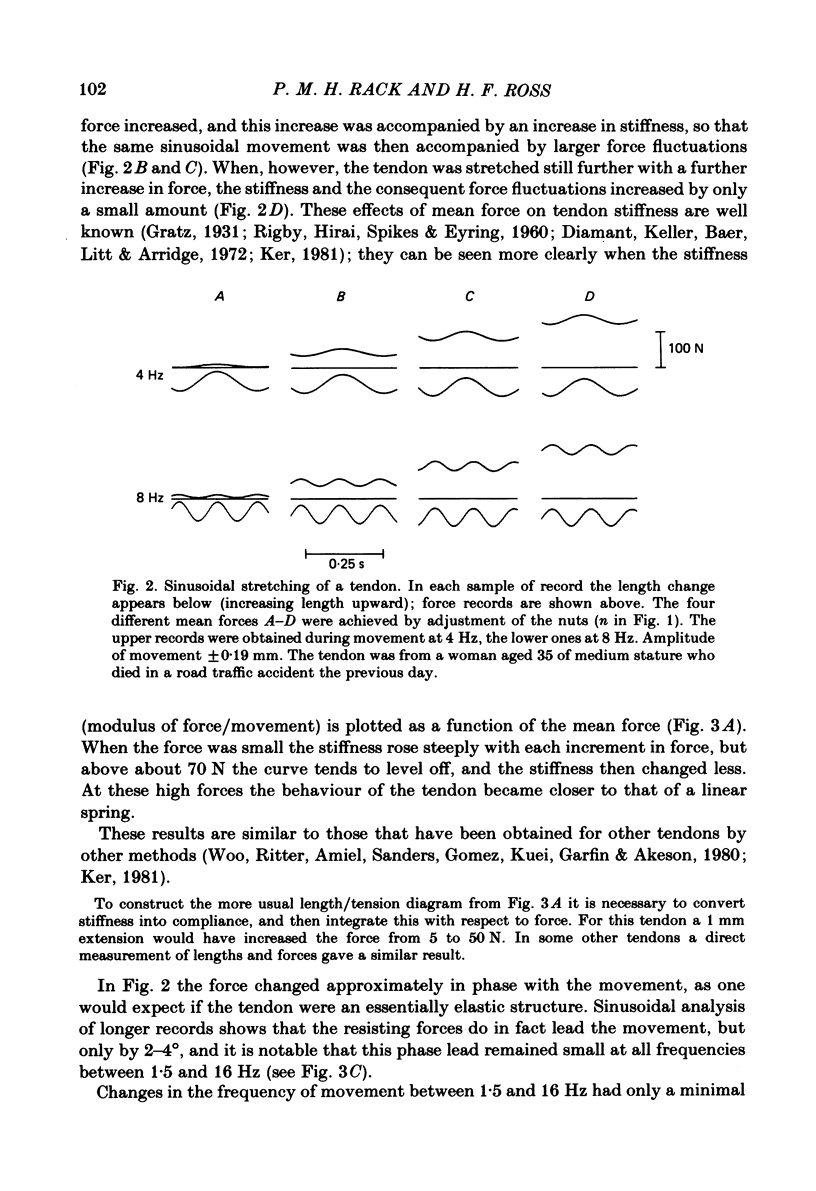
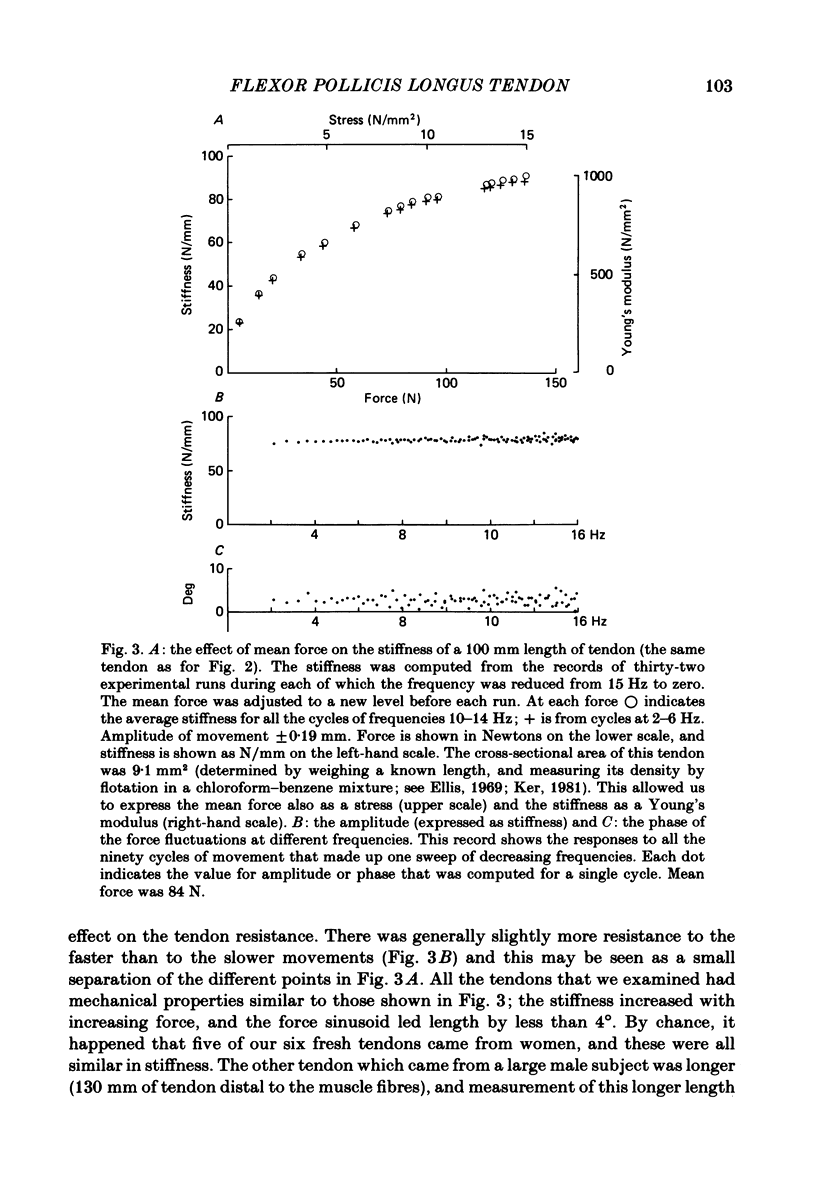

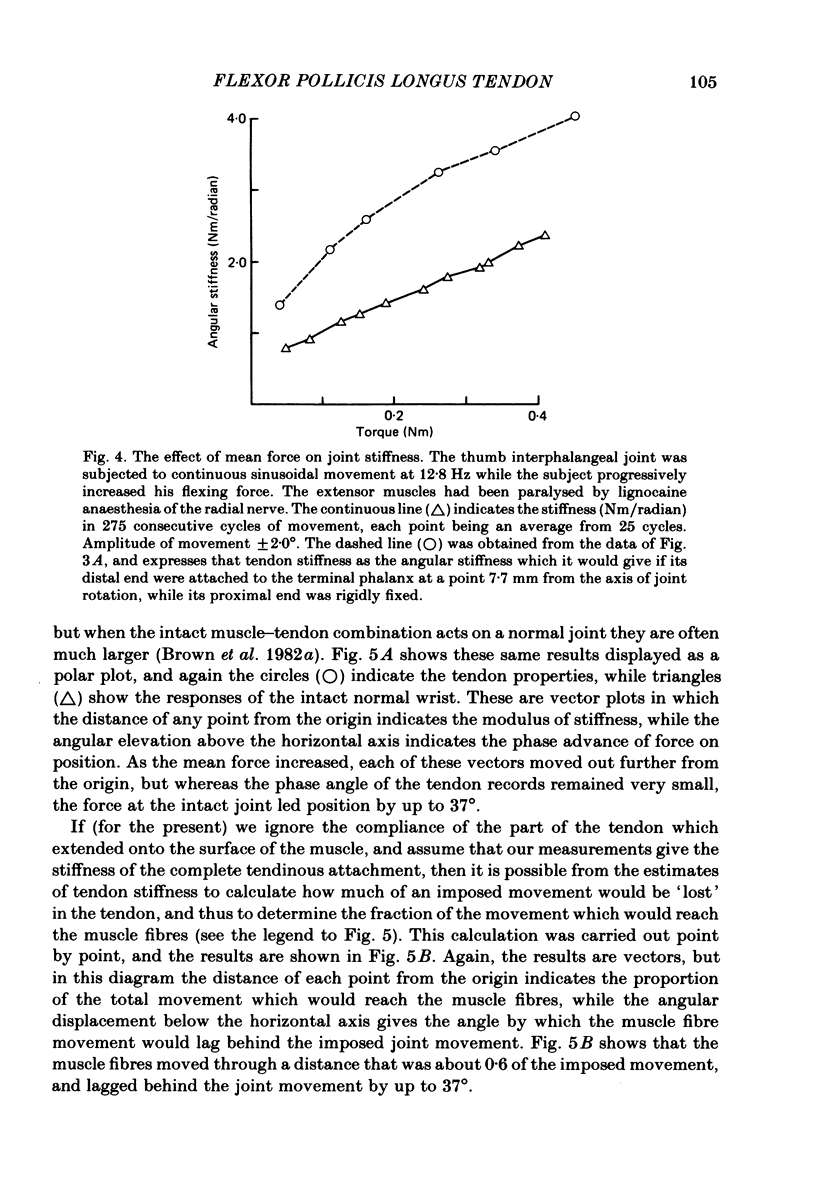
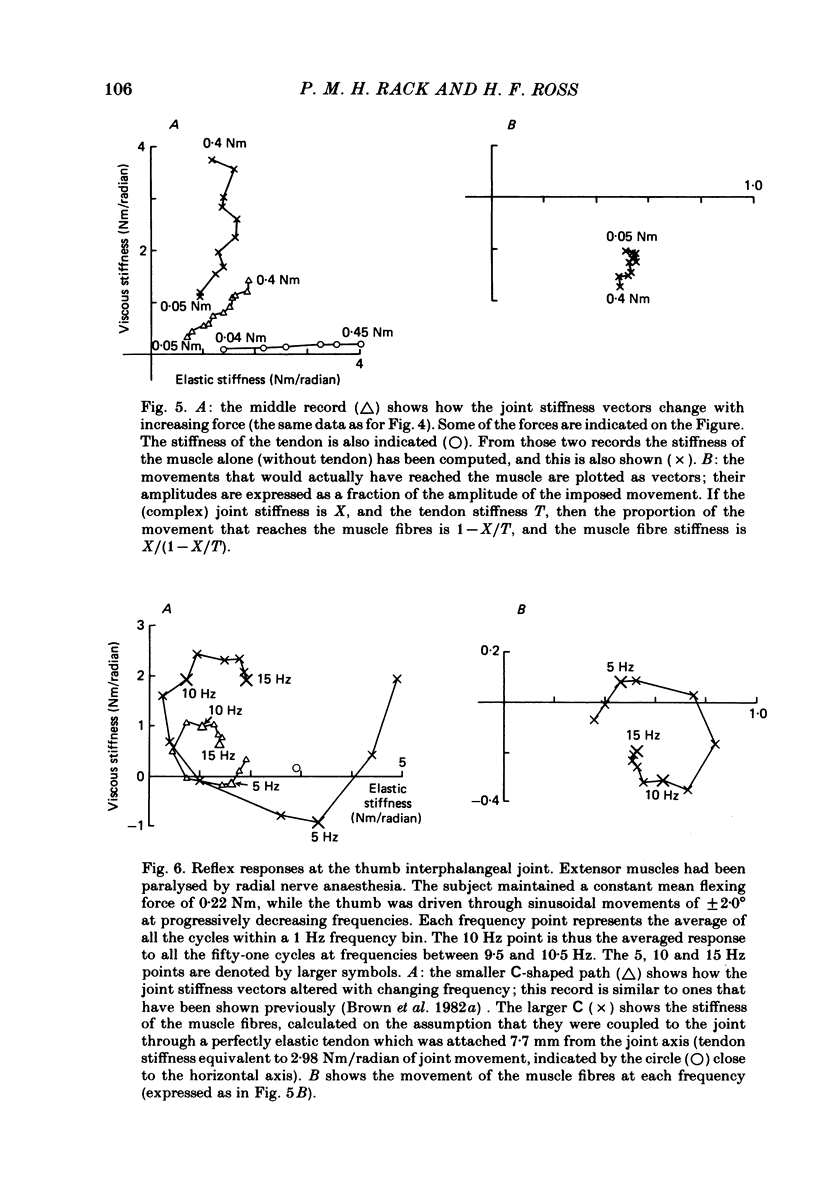
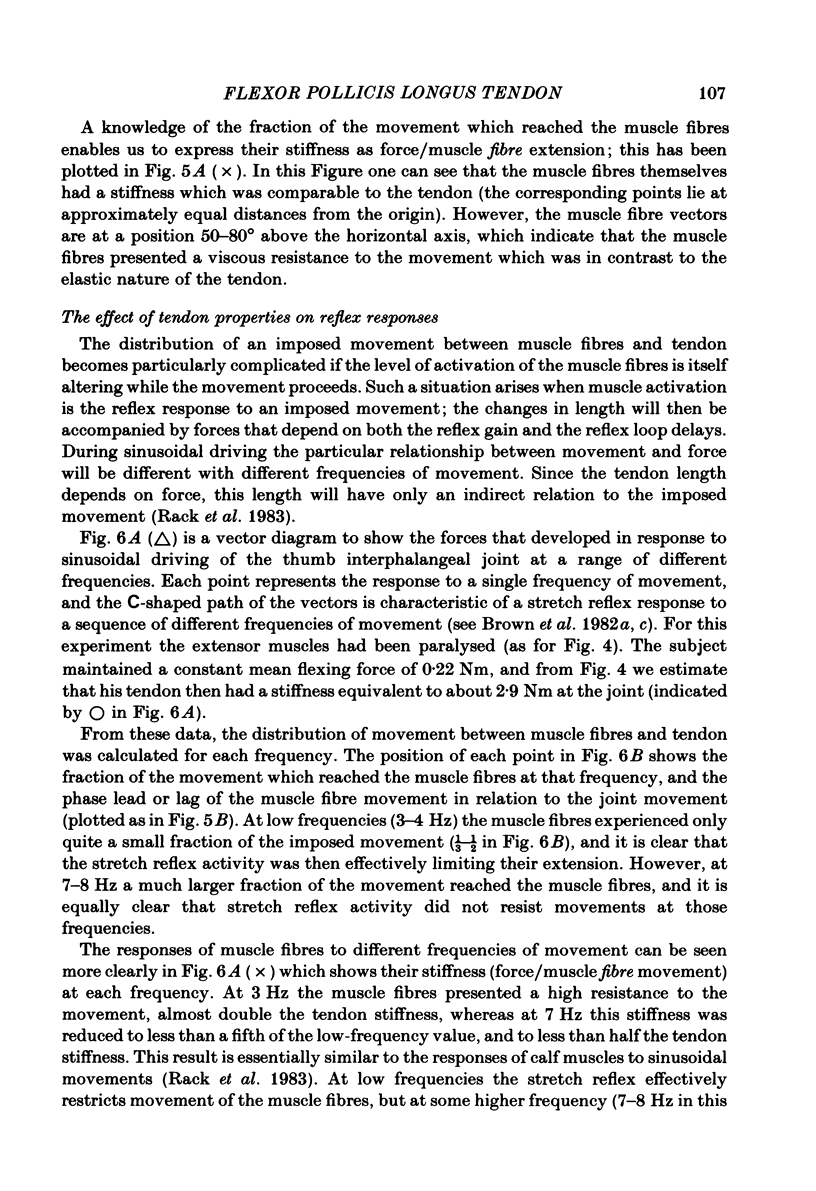
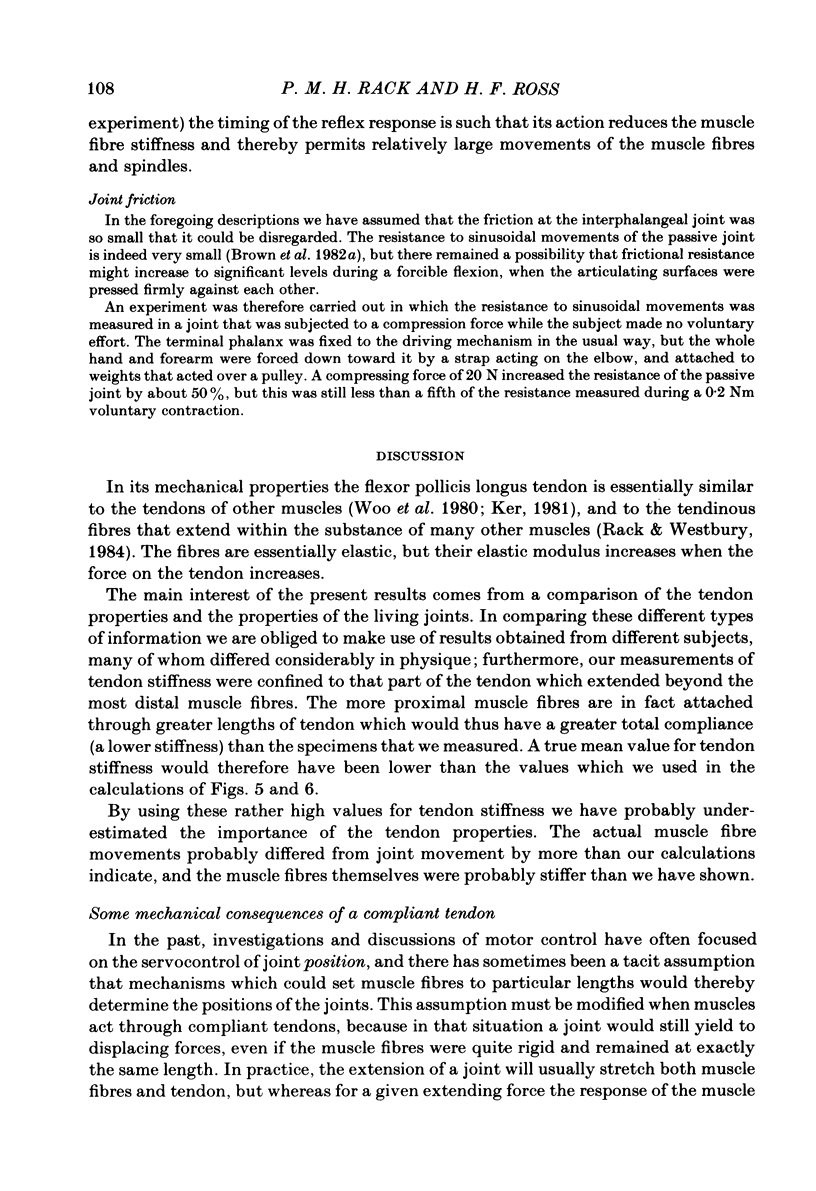
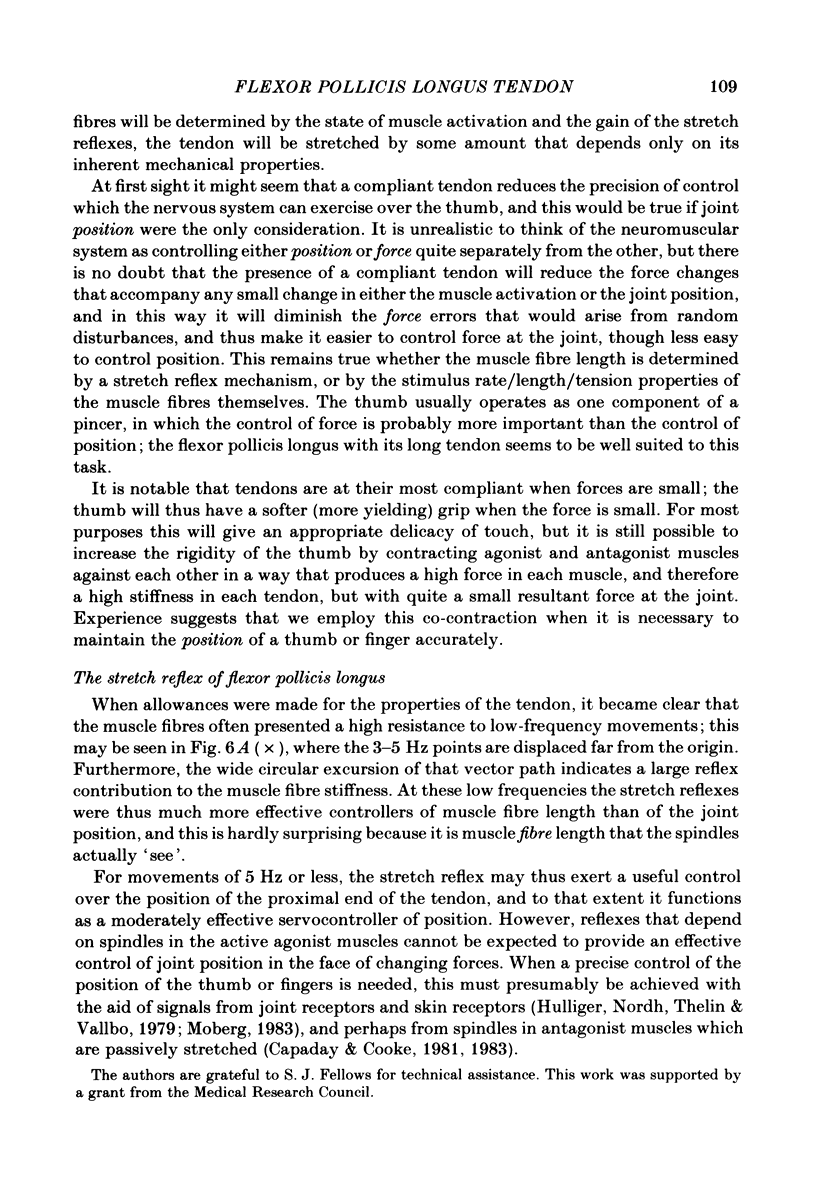
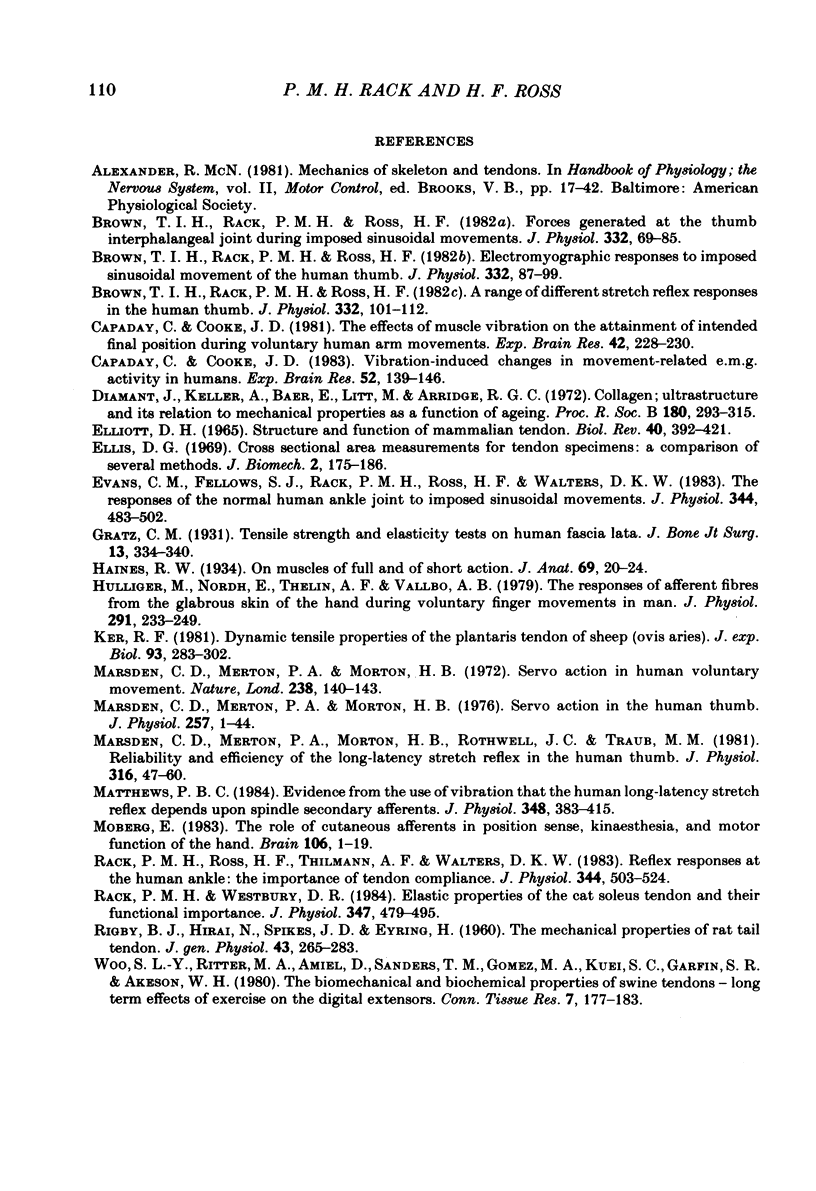
Selected References
These references are in PubMed. This may not be the complete list of references from this article.
- Brown T. I., Rack P. M., Ross H. F. A range of different stretch reflex responses in the human thumb. J Physiol. 1982 Nov;332:101–112. doi: 10.1113/jphysiol.1982.sp014403. [DOI] [PMC free article] [PubMed] [Google Scholar]
- Brown T. I., Rack P. M., Ross H. F. Electromyographic responses to imposed sinusoidal movement of the human thumb. J Physiol. 1982 Nov;332:87–99. doi: 10.1113/jphysiol.1982.sp014402. [DOI] [PMC free article] [PubMed] [Google Scholar]
- Brown T. I., Rack P. M., Ross H. F. Forces generated at the thumb interphalangeal joint during imposed sinusoidal movements. J Physiol. 1982 Nov;332:69–85. doi: 10.1113/jphysiol.1982.sp014401. [DOI] [PMC free article] [PubMed] [Google Scholar]
- Capaday C., Cooke J. D. The effects of muscle vibration on the attainment of intended final position during voluntary human arm movements. Exp Brain Res. 1981;42(2):228–230. doi: 10.1007/BF00236912. [DOI] [PubMed] [Google Scholar]
- Capaday C., Cooke J. D. Vibration-induced changes in movement-related EMG activity in humans. Exp Brain Res. 1983;52(1):139–146. doi: 10.1007/BF00237158. [DOI] [PubMed] [Google Scholar]
- Diamant J., Keller A., Baer E., Litt M., Arridge R. G. Collagen; ultrastructure and its relation to mechanical properties as a function of ageing. Proc R Soc Lond B Biol Sci. 1972 Mar 14;180(1060):293–315. doi: 10.1098/rspb.1972.0019. [DOI] [PubMed] [Google Scholar]
- ELLIOTT D. H. STRUCTURE AND FUNCTION OF MAMMALIAN TENDON. Biol Rev Camb Philos Soc. 1965 Aug;40:392–421. doi: 10.1111/j.1469-185x.1965.tb00808.x. [DOI] [PubMed] [Google Scholar]
- Ellis D. G. Cross-sectional area measurements for tendon specimens: a comparison of several methods. J Biomech. 1969 May;2(2):175–186. doi: 10.1016/0021-9290(69)90029-3. [DOI] [PubMed] [Google Scholar]
- Evans C. M., Fellows S. J., Rack P. M., Ross H. F., Walters D. K. Response of the normal human ankle joint to imposed sinusoidal movements. J Physiol. 1983 Nov;344:483–502. doi: 10.1113/jphysiol.1983.sp014953. [DOI] [PMC free article] [PubMed] [Google Scholar]
- Haines R. W. On Muscles of Full and of Short Action. J Anat. 1934 Oct;69(Pt 1):20–24. [PMC free article] [PubMed] [Google Scholar]
- Hulliger M., Nordh E., Thelin A. E., Vallbo A. B. The responses of afferent fibres from the glabrous skin of the hand during voluntary finger movements in man. J Physiol. 1979 Jun;291:233–249. doi: 10.1113/jphysiol.1979.sp012809. [DOI] [PMC free article] [PubMed] [Google Scholar]
- Ker R. F. Dynamic tensile properties of the plantaris tendon of sheep (Ovis aries). J Exp Biol. 1981 Aug;93:283–302. doi: 10.1242/jeb.93.1.283. [DOI] [PubMed] [Google Scholar]
- Marsden C. D., Merton P. A., Morton H. B., Rothwell J. C., Traub M. M. Reliability and efficacy of the long-latency stretch reflex in the human thumb. J Physiol. 1981 Jul;316:47–60. doi: 10.1113/jphysiol.1981.sp013771. [DOI] [PMC free article] [PubMed] [Google Scholar]
- Marsden C. D., Merton P. A., Morton H. B. Servo action in human voluntary movement. Nature. 1972 Jul 21;238(5360):140–143. doi: 10.1038/238140a0. [DOI] [PubMed] [Google Scholar]
- Marsden C. D., Merton P. A., Morton H. B. Servo action in the human thumb. J Physiol. 1976 May;257(1):1–44. doi: 10.1113/jphysiol.1976.sp011354. [DOI] [PMC free article] [PubMed] [Google Scholar]
- Matthews P. B. Evidence from the use of vibration that the human long-latency stretch reflex depends upon spindle secondary afferents. J Physiol. 1984 Mar;348:383–415. doi: 10.1113/jphysiol.1984.sp015116. [DOI] [PMC free article] [PubMed] [Google Scholar]
- Moberg E. The role of cutaneous afferents in position sense, kinaesthesia, and motor function of the hand. Brain. 1983 Mar;106(Pt 1):1–19. doi: 10.1093/brain/106.1.1. [DOI] [PubMed] [Google Scholar]
- Rack P. M., Ross H. F., Thilmann A. F., Walters D. K. Reflex responses at the human ankle: the importance of tendon compliance. J Physiol. 1983 Nov;344:503–524. doi: 10.1113/jphysiol.1983.sp014954. [DOI] [PMC free article] [PubMed] [Google Scholar]
- Rack P. M., Westbury D. R. Elastic properties of the cat soleus tendon and their functional importance. J Physiol. 1984 Feb;347:479–495. doi: 10.1113/jphysiol.1984.sp015077. [DOI] [PMC free article] [PubMed] [Google Scholar]
- Woo S. L., Ritter M. A., Amiel D., Sanders T. M., Gomez M. A., Kuei S. C., Garfin S. R., Akeson W. H. The biomechanical and biochemical properties of swine tendons--long term effects of exercise on the digital extensors. Connect Tissue Res. 1980;7(3):177–183. doi: 10.3109/03008208009152109. [DOI] [PubMed] [Google Scholar]


